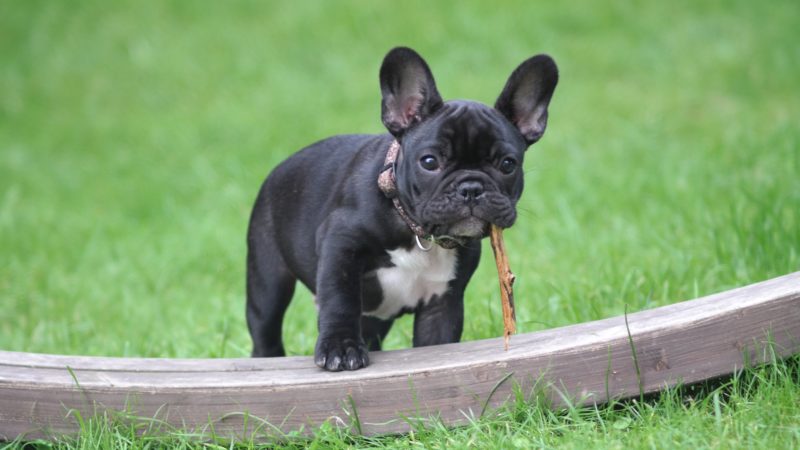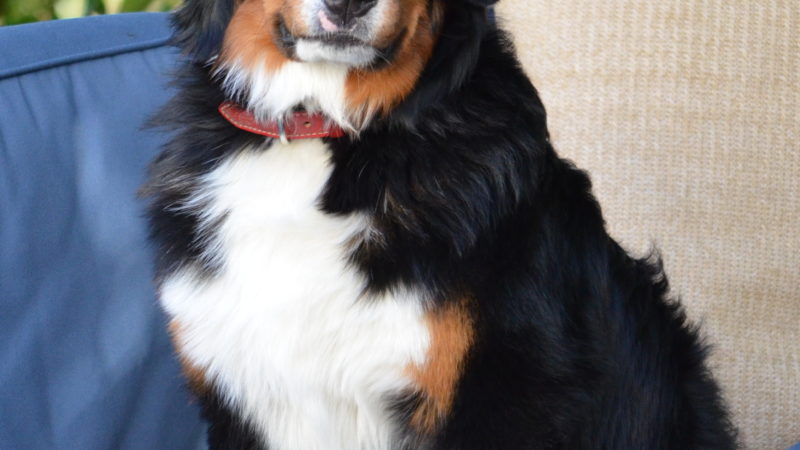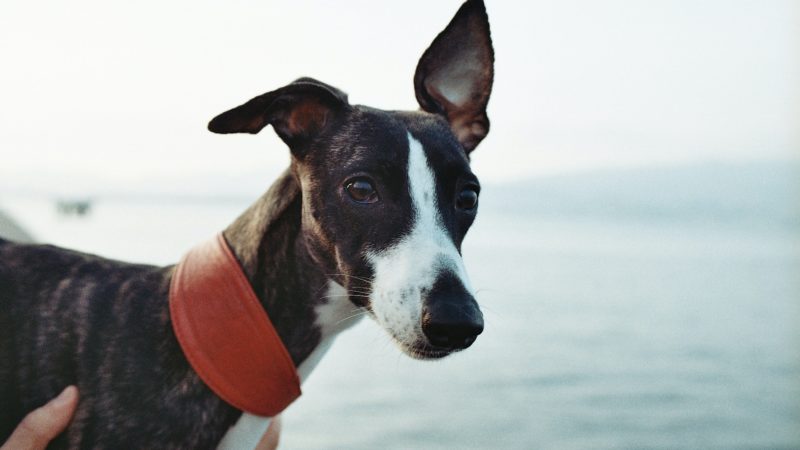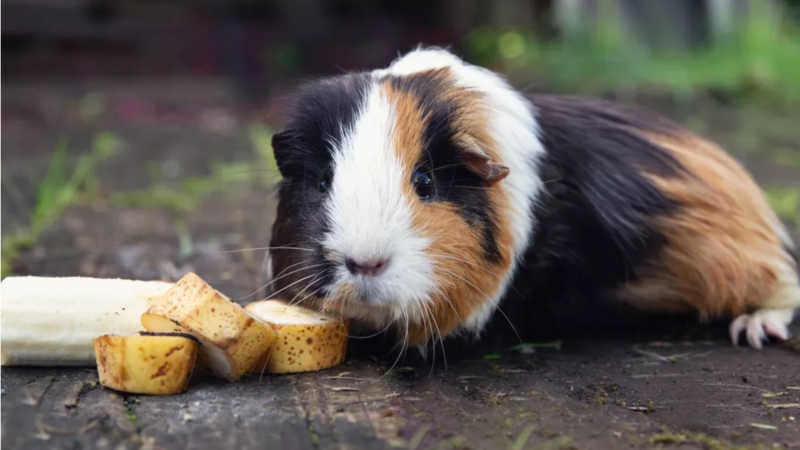Bloat in Dogs: Symptoms, Causes, and Treatment
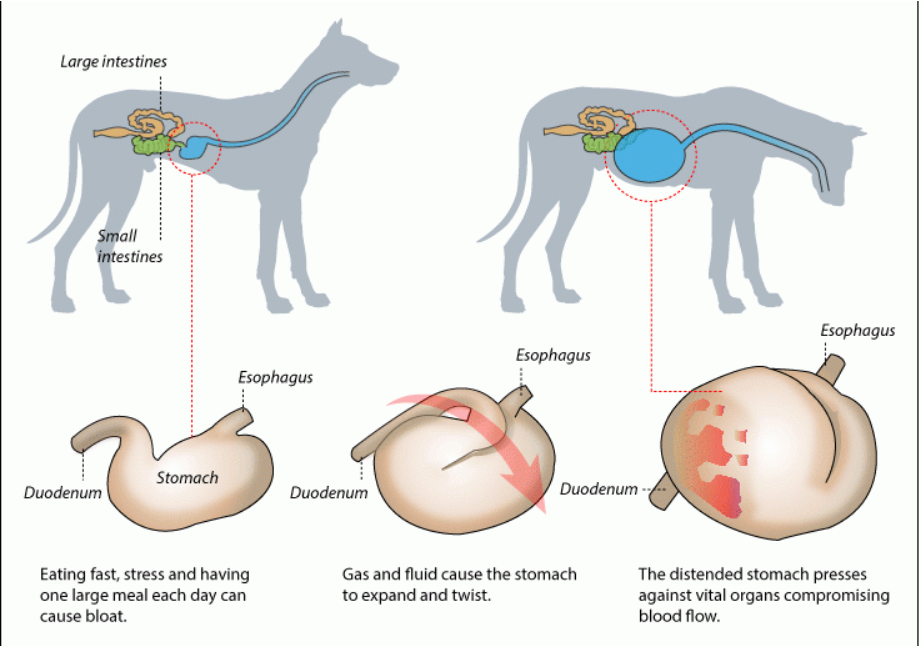
Bloat in dogs is a life-threatening digestive issue caused by eating too much or gastric dilatation-volvulus (GDV), which involves the stomach twisting and filling with gas. Learn more about symptoms, treatment, and prevention of bloat in your dog from this article.
You know when you’ve eaten so much that it hurts? The feeling of being full and bloated is not a pleasant sensation. But for humans, the discomfort from our overindulgence will eventually end – getting rid of excess gas or fluids can take time, though! Dogs don’t have this luxury; they are at risk for bloat,t which, if untreated, quickly becomes life-threatening. So what exactly IS bloat in dogs anyway?
First, what is bloat in dogs?
When we think of a “bloated dog,” the first thing that comes to mind is a fat, overweight animal. But there are two different things called bloat in dogs, and they’re not related at all!
The first type of bloating relates to the holiday-meal scenario described above – it’s when food gets stuck along their digestive tract so quickly due to overeating or eating too fast. The other type occurs when stomach acids start leaking through an ulcer on your pup’s belly which makes them feel bloated.
Dogs are known to eat anything that they can get their jaws around and as much as they can. This causes aerophagia, which is eating air. Dogs who burp after a hearty meal also can avoid more severe bloat because of this action.
The second, far more dire form of dog bloat is called gastric dilatation-volvulus or GDV. Symptoms include excessive gas and fluid in the stomach and food that cannot digest properly because it’s been pushed to the side by its bloated body. When a full 360 degrees are twisted from their normal position, this requires emergency surgery before there can even be any hope for recovery.
The dangerous twist on an already unpleasant condition makes canine bloat very difficult to treat unless treated immediately with emergency surgery once symptoms start involving GDV.
Not only are fluids, gasses, and food matter distending the stomach, but they’re trapped there. A twisted stomach can’t let anything escape out or in. All avenues for relief – belching, flatulence, and defecation among them -are blocked, with a possible death rate reaching up to 50%. Our research shows numbers ranging from 30% to 60%, depending on how much time passes before professional veterinary assistance is sought immediately because of bloat in dogs accompanied by a twisted stomach.
What causes bloat in dogs?
Many people have heard the term dog bloat, but what exactly is it? Dogs can develop this condition when they eat too quickly or too much at one time. If a person has eaten too fast and then goes out for strenuous activity after eating, they might get blisters in their mouth because of all the gas created by swallowing air while chewing food very quickly. This same effect could happen with dogs who enjoy quick bites during playtime–they may ingest more oxygen than necessary which will cause them to become bloated from an excess amount of fluid stored inside their stomachs.
GDV (Gastric Dilatation and Volvulus), also known as bloat, is an ailment where the stomach swells up with gas causing a twisted stomach. This disease can be more dangerous than its less common counterpart because of how unpredictable GDV becomes when sufferers can not vomit or burp out the air they’ve swallowed from eating too fast. Bloating in dogs most often occurs among bigger breeds that have deep chests due to their anatomy being different from humans, who tend not to suffer this affliction quite so frequently, if at all.
GDV has always been considered one of those “just-in-case” ailments like rabies; you know, if your dog catches something awful, then chances are good he
GDV (Gastric Dilatation and Volvulus), also known as bloat, is an ailment where the stomach swells up with gas causing a twisted stomach. This disease can be more dangerous than its less common possible because of how unpredictable GDV becomes when sufferers cannot vomit or burp out the air they’ve swallowed from eating too fast. Bloating in dogs most often occurs among bigger breeds that have deep chests due to their anatomy being different from humans, who tend not to suffer this affliction quite so frequently, if at all.
GDV has always been considered one of those “just-in-case” ailments like rabies; you know, if your dog catches something awful, then chances are good he.
How will my vet treat bloat?
A bloated stomach is often a sign of an emergency can also be caused by other illnesses that may need to be treated quickly.
A person with the common ailment bloat should seek immediate assistance as it means they are in danger or experiencing symptoms such as nausea, vomiting, abdominal distension (swelling), restlessness/agitation, diarrhea-like stools (frequent watery bowel movements).
To improve your dog’s symptoms, vets will take a couple of steps. First, they release the build-up of gas and air inside the stomach to stop tissue from dying by taking pressure off surrounding organs. This can be done using a tube called gastric decompression or through surgery on rare occasions when it is necessary to untwist their gut while not always possible.
At the same time, intravenous fluids will need to be given to reverse shock and slow down heart rate; strong painkillers, antibiotics, and medicine are often required to prevent blood flow damage to the mutant,y bloat.
If the dog can survive these treatments, it will have surgery to remove any tissue dying due to a cut-off in blood supply. After this initial treatment, there’s always the risk of further attack. During an operation, vets may try fixing the stomach back together with the body wall or use gastropexy (an effective way).
Are certain breeds more prone to developing bloat?
Any dog can suffer bloat, but larger breeds with deep chests, such as Great Danes and Weimaraners, are particularly susceptible to the debilitating condition. The chance of a preventative gastropexy is sometimes recommended for these dogs at an early age to avoid future complications.
Symptoms of bloat in dogs
Bloat is a very serious condition in dogs. Some symptoms of bloat are an abnormally distended abdomen, relentless and aimless pacing or walking around, trying to vomit with no positive results. If this restless movement turns into listlessness, fatigue, and inaction, it could be a sign that there’s something worse happening, like GDV.
If they won’t stop moving and their breath is heavy, it may be a sign that your dog has bloat. It could also mean they’re hyperactive or just excited to see you! In either case, make sure to take them in for an emergency vet visit if these symptoms persist after 10 minutes of calmer activity.
Treatment for bloat in dogs
The process of creating a dog with GDV is painful and risky. If surgery for the bloat doesn’t correct it, then light another procedure is needed to prevent twisting in the future.
Some owners of dogs from high-risk breeds have even wondered whether they should subject their pets to preemptive gastropexy, the surgery that would fix the stomach in place and prevent it from twisting.
Can you prevent dog bloat in the first place?
Be mindful of how much your dog eats. Keep food and water dishes on the ground, so they don’t need to crane their neck to eat the mutant, not to feed human scraps or high-carb foods that may produce gas in dogs who are unaccustomed to them.
Risky preemptive surgeries aside, we can prevent our dogs from becoming bloated by being careful about what they’re eating. Smaller regular meals kept the dish at ground level for easy access (so as not to have them be forced into a position where they must crane their necks).
Remaining aware of any new types of food given out which might prove unhealthy if consumed too many carbs all at once. These simple things will keep your mind safe!
Bloating in dogs is uncomfortable, painful, and serious. Monitor your dog’s diet to make sure they exercise before or well after eating their meal.

